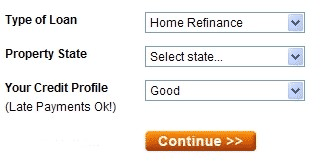Private Mortgage Insurance (PMI) Tutorial
Private mortgage insurance or PMI protects lenders from loss on mortgages with less than 20% equity in the event of foreclosure. And you pay for it!
Don’t confuse hazard or homeowner’s insurance with private mortgage insurance. Homeowner’s insurance protects you from a loss like a fire. They are insuring the actual structure. PMI protects the lender if you don’t pay.
Private Mortgage Insurance Cost
The cost of private mortgage insurance depends on things like your credit, how much equity you have, the type of loan etc. As with most things in the mortgage business the riskier your loan, the more you pay.
The mortgage insurance on a conventional loan does not require upfront fees like on an FHA loan. It is just a monthly amount included in your total monthly payment.
Private Mortgage Insurance Calculator
Your PMI premium is fixed based on plan type (loan-to-value ratio, loan type, loan term, etc.). PMI typically amounts to about one-half of one percent of your mortgage amount annually according to the Mortgage Bankers Association.
The premium payment is usually rolled into your monthly mortgage payment. On a $200,000 mortgage, you may be paying $1,000 per year for PMI. $1,000 divided by 12 months is $83.33 per month.
Private mortgage insurance is not forever. When you do have 20% or more in equity in your home, you can contact the lender to have it removed or the lender has to cancel it when the loan to value is 78% as established by the amortization schedule.
If you contact lender, the process is different for different lenders but it could require an appraisal to establish the new value. You have to only be current on payments to have it cancelled automatically but have good payment history if you are contacting the lender to cancel it at 80%. On an FHA loan, the mortgage insurance can be cancelled after the loan to value reaches 78%. However, you have to have paid the mortgage insurance for at least 5 years.
To get around the private mortgage insurance requirement, loan officers put borrowers into an 80% loan to value 1st mortgage and a 20% second mortgage. Technically, the 1st mortgage is at 80% and that is all the lender cares about. There are advantages and disadvantages to both. The advantage of one loan is one underwriter. With an 80/20 you have different underwriting for both loans with different requirements.
You may also encounter lender paid mortgage insurance (LPMI). Under LPMI plans, the lender purchases the mortgage insurance and pays the premiums to the insurer. The lender will increase your interest rate or costs to pay for the premiums — but LPMI may reduce your settlement costs. You cannot cancel LPMI or government mortgage insurance during the life of your loan.
However, it is possible to cancel private mortgage insurance when your loan balance is reduced to a certain amount. Before you commit to paying for private mortgage insurance, ask about the specific requirements for cancellation in your case.
Remember, Private Mortgage Insurance helps you get the loan.
Also, do not confuse mortgage insurance with mortgage life insurance. Mortgage life insurance is insurance that pays off the loan should you die. This is not ever required to get a mortgage. It is not part of the mortgage process. Lenders just found out it works great to scare people and sell it as a supplement to what they already make on a loan…like they need more. Do not get the mortgage life insurance advertised by lenders. This is usually much more expensive than other options. Contact a financial planner to discuss your options.
Good Luck!
Previous Post:« Mortgage Insurance Deductibility Made Law
Next Post:» Mortgage Insurance Collapse = Stock Panic
Tags: Calculator • Cost • PMI • Private Mortgage Insurance


Very helpful! Thank you.